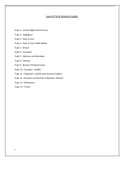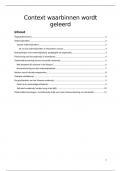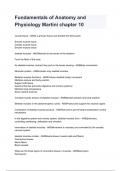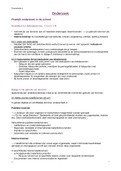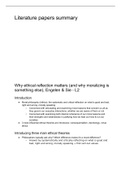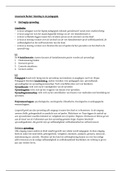Samenvatting
Summary Revision guide of Law of Torts Module
- Vak
- Instelling
This detailed revision guide contains in-depth notes on the following modules: -human rights and tort law -negligence -duty of care -breach causation -defences and remedies -trespass -breach of statutory duty -occupier's liability -employers liability and vicarious liability -nuisance an...
[Meer zien]
